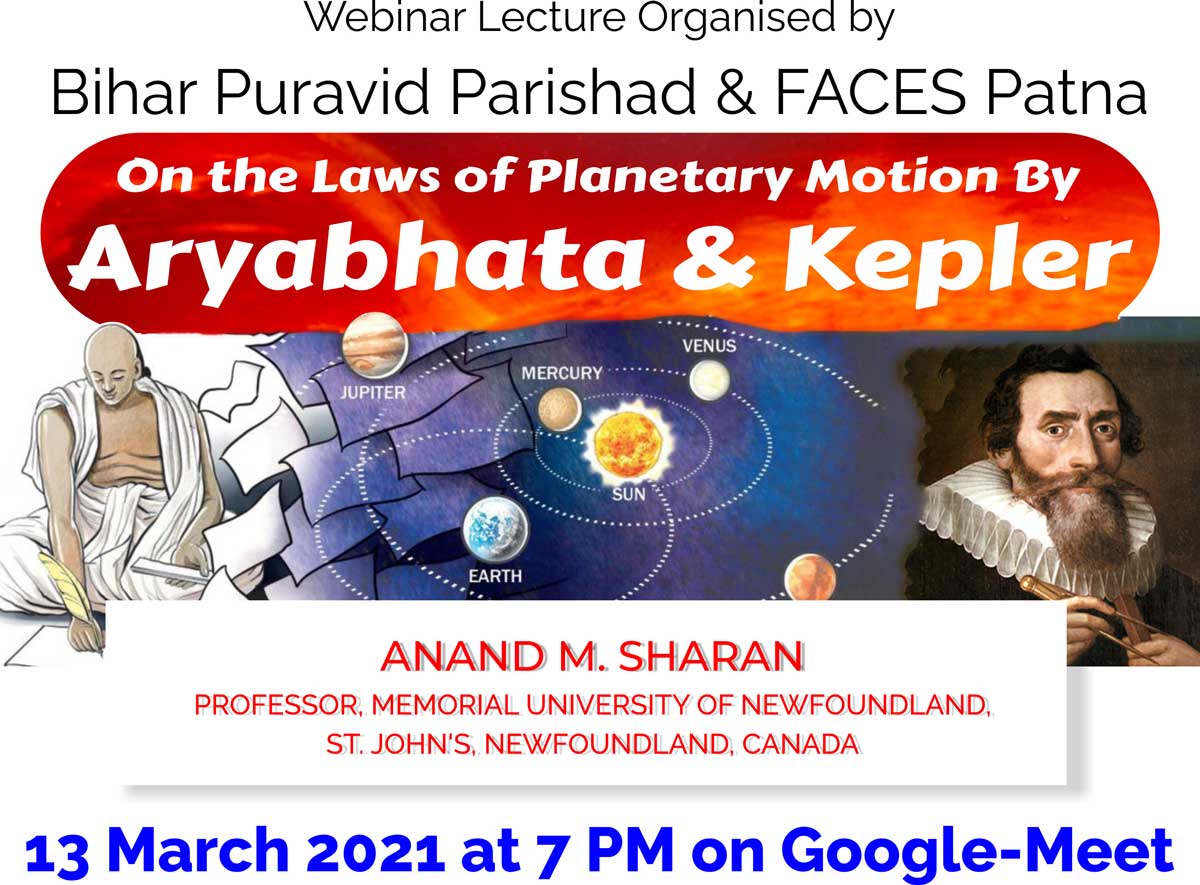

Chapters on astronomy/gravitation in the books prepared for Indian schools open almost like this:
The first theory on planetary motion was geocentric theory proposed by Ptolemy (2nd century AD, Egypt, Alexandria), according to which planets revolve around the earth in circular orbits. In the 16th century Copernicus (AD 1473 -1543) put forward the theory of heliocentric planetary system according to which the planets move in circular orbits around the Sun. After a few decades Johannes Kepler (1571-1630) proposed the laws of planetary motion known as ‘Kepler’s Laws of Planetary Motion’, after his name………
There is no mention of the ‘Aryabhata’s laws of planetary motion’, anywhere in the world. Dr Anand M Sharan is the first scientist to discover recently, these laws when he went through the translation of Aryabhatia written by Aryabhatt in 499 AD at Kusumpura –modern Patna, the capital of ancient India. He could immediately relate it to the Kepler’s law known throughout the world. Aryabhata’s Laws of Planetary Motion had existed since almost 1000 years earlier. Aryabhatt’s third law of motion was more accurate than that of Kepler’s. In addition, Aryabhatt came up with an additional type of motion of the earth - he stated explicitly about the spin motion of the earth about its own axis.

Indian authors never tried to dig out the Aryabhata’s laws even after three quarters of a century of Indian independence, though this book was widely available to anyone in India inexpensively. Not only for the boasting of Indian scientific knowledge, but also for the sake of true chronological account and justified credit to an inventor, the Indian stakeholders in science education ought to have introduced for comparison – laws of Kepler and those of Aryabhata - in school and university books.
In a comparative study of Aryabhata’s laws of planetary motion and Kepler’s laws, Dr. Anand M Sharan, a professor of Indian origin at Memorial University Newfoundland Canada, has minutely calculated the variations in orbital velocities of the planets, eccentricities of the orbits and the constant of Kepler’s third law; and the result of this comparative study clearly suggests that Aryabhata’s model is better!
